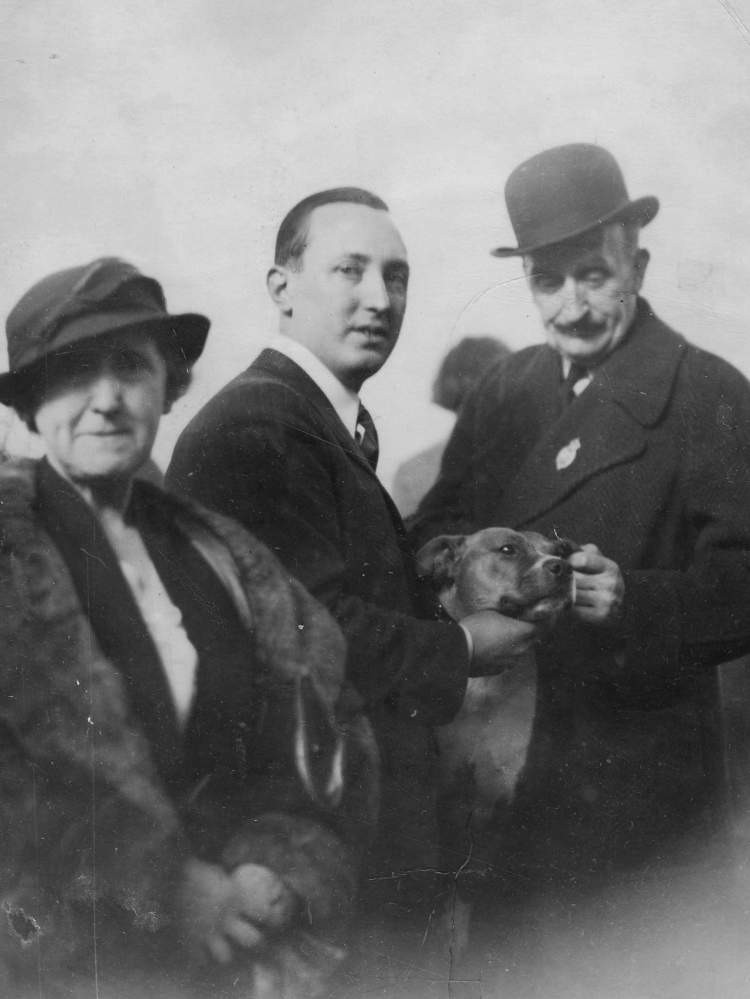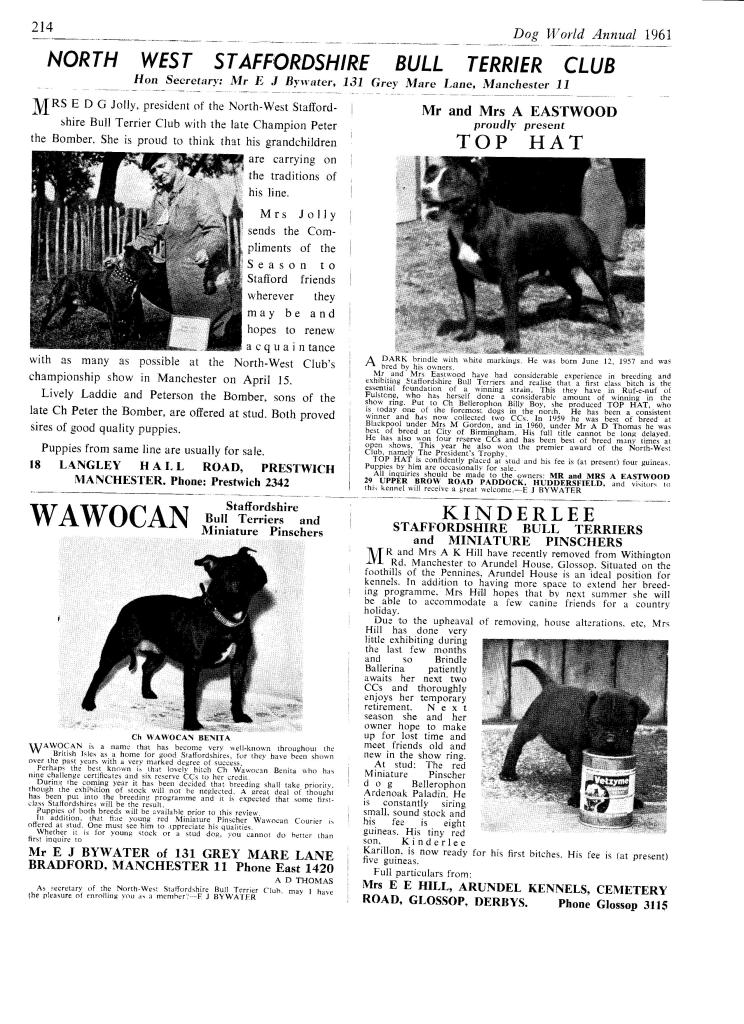

 Through the ‘fifties and ‘sixties, many who were to become successful exhibitors and notable North West men and women joined the Club adding to its standing and strength. To name them all would be impossible but again in the 1961 Dog World NW advertisers (above) include the Bywaters (Wawocan); Evie Hill (Kinderlee) and Mrs Jolly who was the Club President at the time, with her Ch Peter The Bomber.
Through the ‘fifties and ‘sixties, many who were to become successful exhibitors and notable North West men and women joined the Club adding to its standing and strength. To name them all would be impossible but again in the 1961 Dog World NW advertisers (above) include the Bywaters (Wawocan); Evie Hill (Kinderlee) and Mrs Jolly who was the Club President at the time, with her Ch Peter The Bomber.